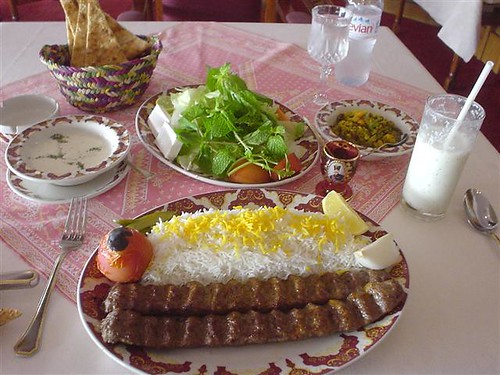
Here is a sad Christmas story conveying no particular lesson other than, perhaps, the speed at which kids can soak up a foreign culture.
My mum, aged 72, is an interpreter. In case you don't know, I am second generation Iranian (Persian is a Californian expression I refuse to use). So my mum interprets for Iranians and Afghanis who are asylum seekers (most claim to be gay or converts to Christianity in the hope they will be granted permanent leave to stay) or simply not fluent in English. She attends court, meetings with lawyers and hospital appointments including births where she has ended up in tears holding a newborn because dad was in Afghanistan and mum was under a general anaesthetic with no other relatives.
Recently she was called to interpret for a 12 year old Afghan boy who had turned up in the UK on the back of a lorry. The lorry had come to a halt on some B road in the middle of the wilds of Lancashire, the back doors opened, and he had been ordered off. It was 2am, freezing and he was on a country lane with no houses, street lights or people to ask for help. A reminder: he was 12 years old - only a few years older than my own twins. And he spoke no English.
He was starving and unsure of where he was, so he walked. Eventually he reached a small town where he saw some lights. He hoped he could find food where the lights were shining from. It turned out to be a nightclub. A kindly bouncer took him to the local police station and directly into foster care.
We look after child asylum seekers here in the UK. This kid was given a complete health check, sent to school and his kindly foster parents even bought him a PAYG mobile phone.
"Did you go to school in Afghanistan? My mum has asked him when she was asked to interpret for the Social Services.
"No."
"Then what did you do?"
"After my dad died, my uncle took me in and I watched over his donkeys."
The same uncle had paid some gangsters to have him transported to the UK. He had no mother.
My mum next saw him a few weeks later and once settled in with his foster family. There had been a disagreement between him and his foster parents. The foster dad had explained that the boy point blank refused to wear clothes bought in TK Max (TJ MAx in the US) and wanted the exact same brands/styles from JD Sports at 4 times the price.
When my mum asked him what the difference was between the products he replied that there were none. So why did he want to pay more?
Silence.
My mum asked him if he wanted to go back to his donkeys. I think it was her way of telling him how fortunate he was.
Silence.
My mum, being 72, could not comprehend a 12year old mind that wanted to pay more for the exact same product. I can understand but cannot articulate it into words. Another article perhaps.
Any thoughts anyone?


































